#Herbert J. Biberman
Explore tagged Tumblr posts
Text




Salt of the Earth, Herbert J. Biberman, 1954.
7 notes
·
View notes
Text
On May 7, 1954, Salt of the Earth debuted to a very limited release in the United States.
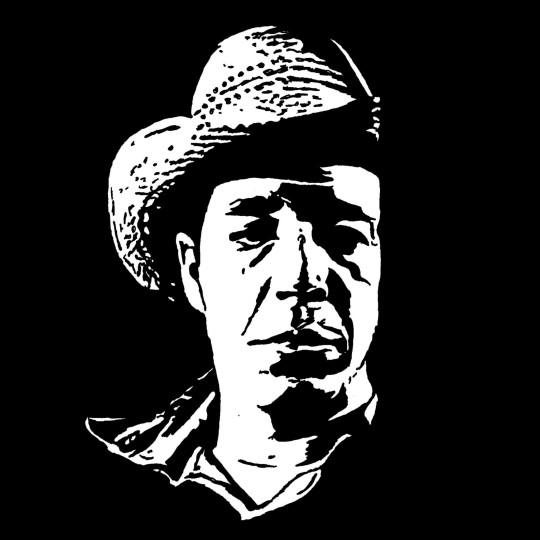
Here's some new Juan Chacon art!
#salt of the earth#1954#herbert j. biberman#social realist film#drama film#hollywood blacklist#1950s films#political drama#feminist film#labor movement#national film registry#film censorship#tcm underground#movie art#art#drawing#movie history#pop art#modern art#pop surrealism#cult movies#portrait#cult film
2 notes
·
View notes
Photo
⬆️⬆️⬆️
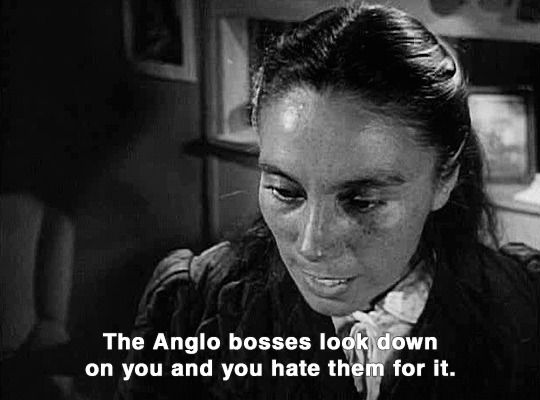
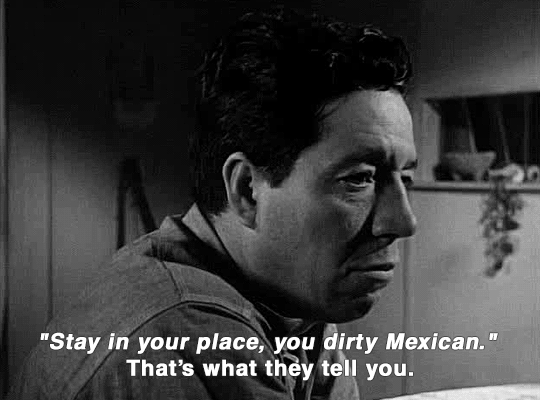
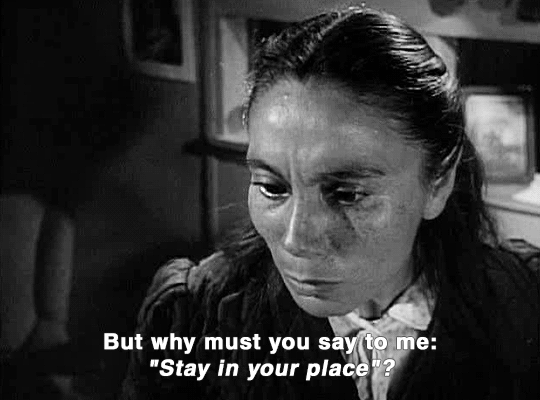
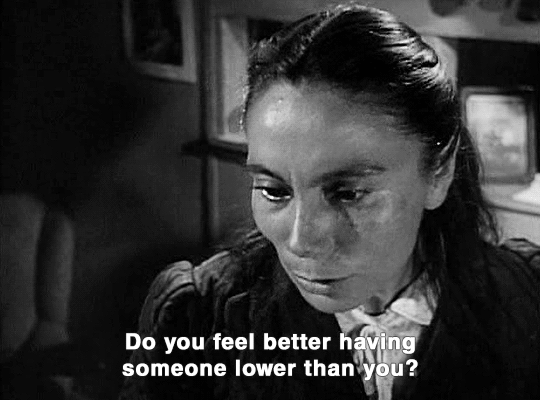
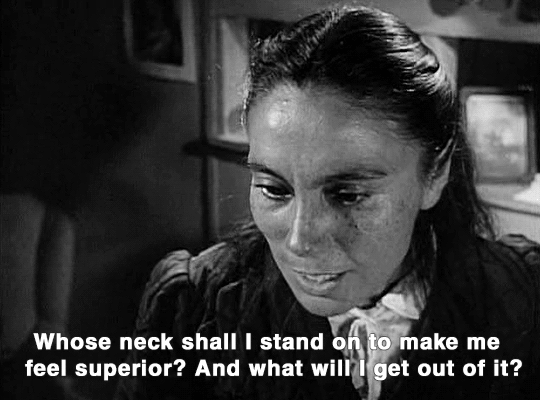


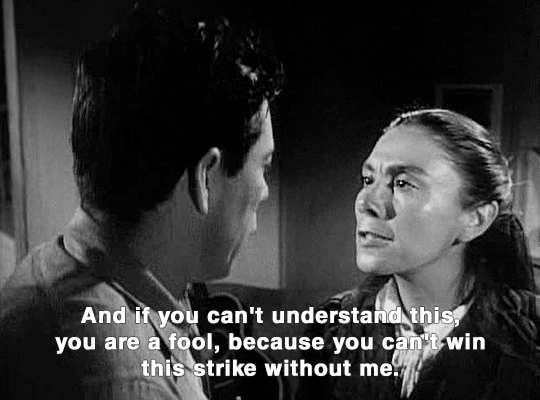
Salt of the Earth (1954), dir. Herbert J. Biberman
#salt of the earth#salt of the earth 1954#herbert j. biberman#film#michael wilson#rosaura revueltas#the hollywood ten#the hollywood blacklist#gifs#filmedit
121K notes
·
View notes
Note
some rosaura revueltas propaganda: https://gael-garcia.tumblr.com/post/188881212793/salt-of-the-earth-1954-dir-herbert-j-biberman i love this scene it lives in my head rent-free
Revueltas vs Schneider
9 notes
·
View notes
Text
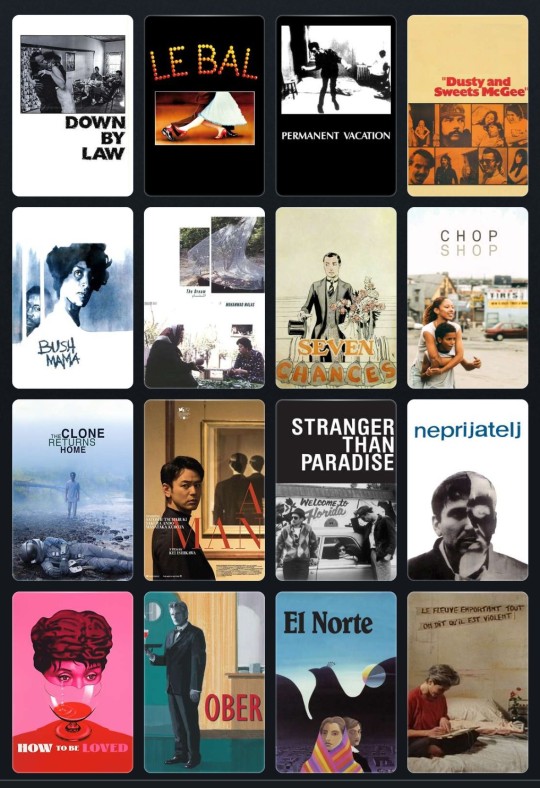

Best of July:
Down by Law (Jim Jarmusch, 1986)
Le Bal (Ettore Scola, 1983)
Permanent Vacation (Jim Jarmusch, 1980)
Dusty and Sweets McGee (Floyd Mutrux, 1971)
Bush Mama (Haile Gerima, 1979)
The Dream [المنام] (Mohammad Malas, 1987)
Seven Chances (Buster Keaton, 1925)
Chop Shop (Ramin Bahrani, 2007)
The Clone Returns Home (Kanji Nakajima, 2008)
A Man (Kei Ishikawa, 2022)
Stranger Than Paradise (Jim Jarmusch, 1984)
The Enemy (Živojin Pavlović, 1965)
How to Be Loved (Wojciech Jerzy Has, 1963)
Waiter (Alex van Warmerdam, 2006)
El Norte (Gregory Nava, 1983)
Les rives du fleuve (Eric Pauwels, 1991)
Salt of the Earth (Herbert J. Biberman, 1954)
The Tribulations of Balthazar Kober (Wojciech Jerzy Has, 1988)
Black Sabbath (Mario Bava 1963)
It Is Good to Live (Fumio Kamei, 1956)
A Personal Journey with Martin Scorsese Through American Movies, (Martin Scorsese, Michael Henry Wilson 1995)
The Great Buster: A Celebration (Peter Bogdanovich, 2018)
The Dark Side of the Heart (Eliseo Subiela, 1992)
Tropical Malady (Apichatpong Weerasethakul, 2004)
The Cool World (Shirley Clarke, 1963)
Bless Their Little Hearts (Billy Woodberry, 1983)
The Tree of Guernica (Fernando Arrabal, 1975)
Memoirs of a Sinner (Wojciech Jerzy Has, 1986)
La Vie de Jésus (Bruno Dumont, 1997)
Emperor Tomato Ketchup (Shūji Terayama, 1971)
Fando y Lis (Alejandro Jodorowsky, 1968)
Wham! (Chris Smith, 2023)
7 notes
·
View notes
Video
⛏️Rosaura Revueltas, Juan Chacon | Salt Of The Earth (1953) | Full Movie...
Salt of the Earth is a 1954 US drama movie written by Michael Wilson, directed by Herbert J. Biberman, and produced by Paul Jarrico. The film was called 'subversive' and blacklisted because the International Union of Mine, Mill, and Smelter Workers sponsored it and many blacklisted Hollywood professionals helped produce it. The producers cast only five professional actors. The rest were locals from Grant County, New Mexico, or members of the International Union of Mine, Mill and Smelter Workers, Local 890, many of whom were part of the strike that inspired the plot. At the time that the movie was released it was not well received, The film is superb, however, and gets 100% from Rotten Tomatoes. Cast Professional actors Rosaura Revueltas as Esperanza Quintero Will Geer as Sheriff David Bauer as Barton (as David Wolfe) Mervin Williams as Hartwell David Sarvis as Alexander Never miss a video. Join the channel so that Mr. P can notify you when new videos are uploaded: https://www.youtube.com/@nrpsmovieclassics
0 notes
Text
LA CAZA DE BRUJAS IV: LAS PELÍCULAS








No se puede decir que haya gran cantidad de filmaciones centradas en el estudio de los hechos de la Caza de Brujas o en sus personajes. Las que directamente se centran en los hechos ya sea en documentales o en ficción son escasas. Otro tanto sucede con aquellas películas que tocan el tema de soslayo (Tal como éramos,) o las que, de una forma casi subliminal, según algunos sesudos críticos hacen mención a estos hechos ya sea criticándolos (Johnny Guitar, Un rey en Nueva York), justificándolos (La ley de silencio) o incluso casos con posturas divergentes en sus análisis (Solo ante el peligro).
He revisado todo el material posible y solo he encontrado 6 películas de ficción y 5 documentales. Resulta bastante curioso que los documentales sean muy tempranos en el tiempo, salvo el último, con respecto a las películas de ficción. Coinciden las fechas de producción del tercer documental realizado con la primera película de ficción sobre el tema: 1976. Han pasado 70 años y la producción norteamericana sobre la Caza de Brujas se puede decir que ha sido muy escueta. ¿El motivo? Es posible que la sociedad norteamericana, al menos el sector más democrático que es el que predomina en el cine, sienta vergüenza por aquellos hechos y no esté muy encantada reconociendo ciertas heridas producidas por el mismo mundo del cine.
Revisemos cronológicamente lo realizado hasta la fecha:
LOS DIEZ DE HOLLYWOOD: John Berry (1950).
La primera producción fue este corto documental (15 minutos) coetáneo con los hechos narrados y en el que aparecen los Diez de Hollywood acusados:
Alvah Bessie, periodista, novelista, crítico y guionista Herbert J. Biberman, guionista, productor y director Lester Cole, guionista y productor Edward Dmytryk, director Ring Lardner Jr., guionista John Howard Lawson, guionista, historiador y dramaturgo Albert Maltz, novelista, dramaturgo, guionista Samuel Ornitz, novelista, guionista, profesor Adrian Scott, productor y guionista Dalton Trumbo, novelista, guionista y director
Tan coetáneo fue el documental con los hechos narrados que inmediatamente tras su exhibición el director, John Berry, también fue incluido en la lista negra.
ORDEN EN LA SALA: el segundo documental es de 1964 y estuvo dirigido por Emile de Antonio. Lo interesante de este documental es que nos ofrece las sesiones del Comité de Actividades Antiamericanas de 1954 en las que McCarthy cayó en desgracia tras ser acusado de haber presionado al Ejército por dar tratos de favor a algunos miembros señalados por el propio senador. Realmente tiene el valor de ser un documento histórico.
HOLLYWOOD ON TRIAL: es el tercer documental que he localizado. Se realizó en 1976 y lo dirigió David Helpern. Analiza todo el recorrido de la Caza, estuvo nominado al Oscar y tiene la curiosidad de que la narración en off corre a cargo de John Huston.
LA TAPADERA: en ese mismo 1976 Martin Ritt filmó la primera película de ficción sobre estos hechos. Una gran película en clave de comedia dramática sin duda, con un curioso papel de Woody Allen y con un grandioso Zero Mostel. Hay que señalar que hubo que esperar unos 25 años para que una de las grandes productoras, Columbia Picture, denunciara los hechos de la Caza de Brujas. (En esta película me emociona el tratamiento tan elegante de un suicidio, posiblemente uno de los mejores filmados de toda la historia del cine).
CAZA DE BRUJAS: hubo que esperar otros 15 años para que en 1991 se tratase de nuevo este tema con esta ópera prima dirigida por Irving Winkler- el productor de Toro salvaje- y que contó con un gran Robert de Niro entre sus actores. Es una película didáctica que muestra las presiones sobre los profesionales del cine y los sufrimientos entre los familiares y los amigos de los afectados. Posiblemente sea el tratamiento más emocionante de este tema.
RED HOLLYWOOD: en 1995 Thom Andersen y Noël Burch dirigen este documental en el que se analizan diferentes etapas del cine en Estados Unidos, especialmente los años de la Caza de Brujas con entrevistas a algunos de los que fueron incluidos en las listas negras y acusados.
PUNTO DE MIRA: la única producción no norteamericana, en este caso una coproducción hispanobritánica, se realizó en el año 2000 y fue dirigida por Karl Francis. Cuenta con la aportación española de Angela Molina.
La historia de la película circula en torno a Herbert J. Biberman, uno de los Diez de Hollywood y director de la película La sal de la tierra de 1954, que realizó tras salir de la cárcel y que fue boicoteada por las distribuidoras. Punto de mira (rodada en parte en la provincia de Murcia) no es una gran película, pero sirve para conocer la represión a que se vieron sometidos los Diez de Hollywood pues la primera parte está dedicada a las acusaciones y la segunda a las vicisitudes del rodaje de La sal de la tierra; actualmente esta película tiene el honor de estar guardada en la Biblioteca del Congreso de Estados Unidos por sus valores artísticos y culturales.
Final del formulario
BUENAS NOCHES Y BUENA SUERTE: sin duda la más conocida de todas las referidas aquí. Fue dirigida e interpretada en 2005 por George Clooney y tuvo gran éxito tanto en Estados Unidos como en el extranjero.
La película es un homenaje a todos los perseguidos por el macartismo y narra unos hechos reales: el enfrentamiento que, en 1953 vía televisión, el periodista Edward Murrow mantuvo en su programa contra McCarthy. El programa fue clave para que la opinión pública cambiase con respecto al senador. A Murrow se le considera uno de los precursores de la televisión moderna.
El título de la película arranca con la frase que el presentador Murrow despedía todos los días su programa: “Buenas noches y buena suerte”.
TRUMBO Y LA LISTA NEGRA: documental de 2007 dirigido por Peter Askin sobre un guion de uno de los hijos de Dalton Trumbo. Se relata la vida personal y familiar de Trumbo en los días en que fue acusado y condenado, las presiones e infamias que sufrió su familia, especialmente sus hijos en el colegio. Conocemos las cartas personales que escribió durante esos meses a los familiares y amigos, leídas por famosos actores actuales como
el recientemente fallecido Donald Sutherland, Liam Neeson, Dustin Hoffman o Michael Douglas.
Un documental entrañable que además de sus valores cinematográficos permite acercarnos al lado más íntimo, personal y familiar de este gran guionista del cine.
TRUMBO. LA LISTA NEGRA DE HOLLYWOOD: la penúltima de las películas reflejadas es muy reciente, 2015, y fue dirigida por Jay Roach. La película es un biopic sobre el novelista, guionista y director Dalton Trumbo, el más señalado de los 10 de Hollywood y sirve para recrear las situaciones y personajes que vivieron aquellos días.
Trumbo, que nunca negó pertenecer al Partido Comunista, era el guionista más prestigioso y mejor pagado de Hollywood. Tras ser condenado y pasar un año en la cárcel se quedó sin trabajo y tuvo que escribir clandestinamente para que otros se otorgasen sus guiones o hacerlo directamente con seudónimos. Trumbo tuvo que exiliarse un tiempo en Méjico donde conoció a Buñuel (que también había huido de Estados Unidos unos años antes ante la cruzada anticomunista).
Por la película pasan muchos de los personajes famosos de la meca del cine por aquellos años, aunque se centra sobre todo en la vida del guionista de películas como Papillon, Éxodo, El demonio de las armas o El hombre de Kiev. Recibió el Oscar en dos ocasiones y ambas usando seudónimo: Vacaciones en Roma (1953) y El Bravo (1956); en esta última utilizó el seudónimo Robert Rich y cuando se le llamó en la gala para entregarle el Oscar… nadie se presentó. Muchos años tuvieron que pasar para que la Academia de Hollywood lo reconociese como autor de estos dos guiones: nada menos que en 1993 y 1975 respectivamente.
Al fin en 1960 y bajo la presión de Kirk Douglas su nombre se rehabilitó y pudo aparecer su nombre en los créditos de Espartaco como guionista. Su hija Mitzi que contaba 15 años cuando el estreno recuerda que “Fue la primera vez que vi su nombre en pantalla. Fue increíble, fantástico”. En 1971 Dalton Trumbo nos ofreció una de las grandes películas pacifistas, Johnny cogió su fusil, como guionista y director.
Trumbo. La lista negra de Hollywood, es una película didáctica sobre el tema que nos ocupa, que merece ser recomendada y que por encima de los avatares del guionista norteamericano lo que nos presenta es un documento contra la censura de cualquier tipo.
SER LOS RICARDO: confieso que la he añadido como un estrambote ya que tenía finalizado el capítulo con la película anterior, pero es que en 2021 se realizó esta última, dirigida por Aaron Sorkin, que aunque en sentido estricto solo responde a las relaciones sentimentales entre la actriz y cómica de TV y cine Lucille Bal (Nicole Kidman) y su marido de origen cubano Desi Arnaz (Javier Bardem) muestra durante todo su desarrollo el ambiente ante las sospechas que tuvo que sufrir la actriz por su posible afiliación comunista. El relato se atiene con bastante exactitud a los hechos reales salvo en la secuencia final, tiene una buena factura y se deja ver gracias especialmente a la actuación de Kidman.
7/7/2024
0 notes
Photo
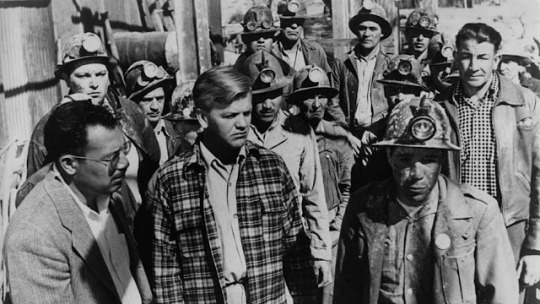
Striking miners in Salt of the Earth (Herbert J. Biberman, 1954)
Cast: Will Geer, David Bauer, David Sarvis, Mervin Williams, Rosaura Revueltas, E.A. Rockwell, William Rockwell, Juan Chacón, Henrietta Williams. Screenplay: Michael Wilson. Cinematography: Stanley Meredith, Leonard Stark. Film editing: Joan Laird, Ed Spiegel. Music: Sol Kaplan. Although it holds one's interest and is a largely successful American attempt to imitate the neo-realism of postwar Italian directors like Roberto Rossellini and Vittorio De Sica, Salt of the Earth is not, I think, a great movie. The acting is amateurish -- necessarily so, because most of the actors are in fact amateurs -- and the plotting is tendentious, with "bad guys" who are given no depth of characterization. But I think it is, perhaps more now than ever, an essential movie. It tells the story of a miners' strike in New Mexico that's based on an actual 1951 strike by the workers of the Empire Zinc Company. The point of view is mostly that of a Mexican-American married couple, the miner Ramon Quintero (Juan Chacón) and his wife, Esperanza (Rosaura Revueltas). When the miners go on strike for better working conditions, especially to put Latino workers on a par with the Anglos, the company invokes the Taft-Hartley Act, enjoining the striking workers from picketing. But the miners' wives take up the cause, in part because they want to improve the standards of the company-owned housing they live in. The film develops a tension not only between workers and management but also between Juan, who clings to a traditional machismo, and Esperanza, who is pregnant but insists on joining the other women on the picket line, where they are subjected to harassment and threats of violence, and are briefly thrown in jail. The story has a happy ending, with the miners and their wives triumphing, but the film itself was denounced as communist propaganda, and its director, Herbert J. Biberman, was one of the Hollywood Ten who were cited for contempt of Congress for refusing to testify before the House Un-American Activities Committee. Biberman went to jail for six months. The film's screenwriter, Michael Wilson, was blacklisted, though he continued to work on films sub rosa: His work on the screenplay for The Bridge on the River Kwai (David Lean, 1957) won an Oscar, though only Pierre Boulle, who neither spoke nor wrote English, was credited. In 1984, the Academy posthumously restored Wilson's credit on the film and his Oscar, as it later also restored his credits on the Oscar-nominated screenplays for Lawrence of Arabia (David Lean, 1962) and Friendly Persuasion (William Wyler, 1956). Salt of the Earth itself got a kind of belated recognition in 1992 when the Library of Congress chose it for inclusion in the National Film Registry. And the story of the treatment of its filmmakers could serve as an object lesson in an era when resurgent racism and anti-feminism threaten to turn the clock back to the era in which the film was made.
3 notes
·
View notes
Text

3 notes
·
View notes
Photo

New Orleans (1947)
The city of New Orleans is synonymous with a rich cultural tapestry shaped over centuries. Located on the banks of the Mississippi River, its economic and political influence waned with the spread of railroads and highways. Today, its influences are indigenous American, African, French, Spanish, Creole, Honduran, Vietnamese, and much more. But the city remains an inimitable cultural force. One of the city’s most significant contributions to the world is jazz – a musical genre that, even in the mid-twentieth century, attracted racially-coded disdain.
I must admit that I am instantly suspicious of any film that takes a city’s name as its title. Being not in a sniping mood as I write this sentence, I will not single any certain film out – for now. But to reduce a film title to a city’s name is to heighten expectations that the filmmaker will capture the so-called “soul” of a city (a nearly impossible task). Or perhaps they shall depict a man-made or natural disaster that takes place in that city (how often does a city’s name become shorthand for a mass shooting?). Enter Arthur Lubin’s New Orleans: a quasi-musical that does not have the courage to let the musical numbers guide it. The film stars Louis Armstrong (essentially playing himself) and Billie Holiday (not playing herself in her only credited role in a feature film), in addition to other jazz stalwarts at the time: Woody Herman, drummer Zutty Singleton, clarinetist Barney Bigard, trombonist Kid Ory, guitarist Bud Scott. New Orleans makes the mistake of not having Armstrong and Holiday be the main stars. Instead, the film has a half-baked, predictable romance. For a film title with such enormous implications, New Orleans’ concentration makes no sweeping statements about the eponymous city. Instead, it turns its gaze to jazz’s reputation among high-society white Americans.
It is 1917. The Storyville district of New Orleans is a den of prostitution, drinking, gambling, and – worst of all – jazz. Storyville’s residents are mostly black, but some of its welcome patrons are white. Nick Duquesne (Mexican actor Arturo de Córdova) runs a gambling joint frequented by Mrs. Rutledge Smith (Irene Rich) and classical music conductor/pianist Henry Ferber (Richard Hagerman). Irene avoids the jazz there (one of the regulars is Louis Armstrong and the aforementioned players), but her daughter, Miralee (Dorothy Patrick) – an operatic soprano who has arrived in New Orleans to make her professional classical music debut – is entranced by this radical music. Miralee is also entranced with Nick, against her mother’s wishes. Miralee is staying with her relative when she meets their maid, Endie (Billie Holiday), who surreptitiously plays the piano and sings jazz music when she gets the chance. As you might imagine, Endie’s employers disapprove. The film comes to a head as the U.S. military forcibly shuts down Storyville (evicting hundreds of black residents overnight), Nick leaves New Orleans, and Miralee must contend with her emotions just before she makes her classical music professional debut.
Billie Holiday’s fans might be troubled by the fact she is a maid here, given that she intentionally avoided physically demanding occupations in real life. Her reaction to this casting is unclear, as different reputable sources offer contradictory claims: that she abhorred being cast as a maid (Meg Greene’s Billie Holiday: A Biography), or that she relished the opportunity to be in a motion picture regardless of the role (an interview with music journalist Leonard Feather). So as tough as it may be to see her in a subservient role, Holiday appears to be enjoying herself – especially during the musical numbers she is a part of. She is clearly, other than Louis Armstrong, the most musically accomplished member of the cast. But when her character disappears from the film in the final third, New Orleans heaves due to the hackneyed romance between Nick and Miralee. To toss the one actor making this film worth watching for no sensible reason is a disastrous choice by screenwriters Elliot Paul (1941’s A Woman’s Face, 1945’s Rhapsody in Blue) and Dick Irving Hyland (1947’s Kilroy Was Here).
Even in a film independently released through United Artists (the one major Hollywood studio of Old Hollywood with the least executive interference), she and Armstrong cannot be the central stars. Considering Holiday’s musical talents, one wonders why she never starred in another film. Despite some digging, I could not find the answer. But if any black woman musician could have films centered around her, it would be Holiday. Her contemporaries, Lena Horne and Ethel Waters, could never overcome the terrible beliefs that audiences would not pay to see a film with a black actress in the lead role. But did Holiday – noting how Louis Armstrong also appeared in films – want to make more films? That may be an answer for someone else to uncover.
More than any film of its time that I can recall, New Orleans is overflowing with a disobedient musical energy. When considering musical genres innovated by African-Americans, there is an underground aspect to their initial spread that, at first, appears exclusive. Jazz, R&B, and hip hop have all gone through these motions: a tumultuous, secretive birth; a rebellious adolescence where critics decry the moral fabric of such music; and finally mainstreaming. Jazz in New Orleans lies somewhere within that adolescence. Its troubled reputation is the result of a mixture of musical and racial tensions. New Orleans’ affluent white community, on its surface, disdains jazz and prefers the import that is Western classical music – opinions they express vocally (as an amateur classically-trained musician who learned more about jazz later in life, I can’t stand the gatekeeping behavior exemplified in this film). So any time that jazz music is played in an unorthodox setting – the parlor of the Smith household, an orchestra hall – it feels defiant, dangerous.* These musical-racial dynamics persist in America to this day. To even see a film acknowledge that conflict, however ineloquently, is credit to the screenwriters and director Arthur Lubin understanding aspects about musical popular culture of this time.
But what is New Orleans and New Orleans without music? First sung by Holliday and reprised (one might even say appropriated in the negative sense) multiple times is, “(Do You Know What It Means to Miss) New Orleans”, with music by Louis Alter and lyrics by Edgar De Lange. Louis Armstrong is on his signature trumpet, a phalanx of great jazz instrumentalists play on the flanks, and Billie Holiday’s voice captures the timbre necessary in any song about longing.
Do you know what it means to miss New Orleans And miss it each night and day? I know I’m not wrong, the feeling’s getting stronger The longer I stay away.
youtube
It is a song representative of this film’s failed ambitions as an embodiment of New Orleans’ spirit. But it is also a brilliant showcase for some of the great jazz figures working at this time – including instrumental performances by Woody Herman and his orchestra and a virtuosic performance of “Honky Tonk Train Blues” by pianist Meade “Lux” Lewis. Nevertheless, New Orleans’ most soulful performances always revolve around Armstrong and Holiday singing Alter and De Lange’s original compositions. Other soundtrack highlights include “The Blues are Brewin’” and “Farewell to Storyville”. The former exemplifies Holiday’s timeless appeal, her singing voice’s unornamented pathos that elevates the simplest of lyrics. The latter is the most context-dependent song in the soundtrack and occurs as the U.S. military orders the closure of the speakeasies and gambling joints of Storyville – a swinging elegy without defeatism. New Orleans is at its most enjoyable during these musical numbers, and the film just feels lost whenever Armstrong and Holiday are not present or when any of the supposed leads open their mouths to speak.
That Lubin and the film’s producers do not trust the soundtrack to carry New Orleans indicates an ironic misgiving towards jazz music itself. United Artists’ refusal to reward Armstrong and Holiday star billing over de Córdova and Patrick is probably rooted to then-contemporary reality that movie theaters in the American South refused to show films with black leads. In addition, jazz music – like in this film – was not yet completely in the mainstream. If it appeared in a Hollywood film (and elements of jazz often appeared in mid-century American musicals), it almost always would be presented and popularized by a white performer. This development is not exclusive to jazz, let alone artistic medium. The filmmakers, in New Orleans’ final third, muddle their message through such appropriation. “Cultural appropriation” at its most basic definition is a neutral concept, but the developments in the film’s closing scenes – intentional or otherwise – extend this appropriation by presenting a white person’s presentation of jazz as more acceptable to a general audience than a black person’s.
For New Orleans, it remains obscure in terms of Hollywood musicals, African-American cinema, and within the esteemed United Artists filmography. In the present day, it serves best as an exhibition for some of the most acclaimed jazz musicians and performers working in the 1940s. To those fans of the numerous black jazz performers appearing in the film, New Orleans is a bittersweet reminder of what may have been.
My rating: 6.5/10
^ Based on my personal imdb rating. Half-points are always rounded down. My interpretation of that ratings system can be found in the “Ratings system” page on my blog (as of July 1, 2020, tumblr is not permitting certain posts with links to appear on tag pages, so I cannot provide the URL).
For more of my reviews tagged “My Movie Odyssey”, check out the tag of the same name on my blog.
* In one scene in an orchestral concert hall, jazz is played as an encore to a classical music concert. It says volumes that the audience is beside themselves and that all of the members of the orchestra (and Richard Hagerman, playing their conductor) are transfixed.
#New Orleans#Arthur Lubin#Arturo de Córdova#Dorothy Patrick#Louis Armstrong#Billie Holiday#Marjorie Lord#Irene Rich#John Alexander#Richard Hageman#Elliot Paul#Dick Irving Hyland#Herbert J. Biberman#Nat W. Finston#Woody Herman#Eddie DeLange#Louis Alter#TCM#My Movie Odyssey
5 notes
·
View notes
Text
On April 4, 1957, Salt of the Earth debuted in the Netherlands.







#salt of the earth#herbert j. biberman#michael wilson#rosaurare vueltas#juan chacon#hollywood blacklist#drama film#social realism#political drama#labor movement film#censored film#film censorship#feminist film#tcm underground#movie art#art#drawing#movie history#pop art#modern art#pop surrealism#cult movies#portrait#cult film
1 note
·
View note
Photo





Salt of the Earth (1954)
Directed by Herbert J. Biberman
#salt of the earth#herbert j. biberman#salt of the earth 1954#film#the hollywood ten#hollywood blacklist#gifs#filmedit
280 notes
·
View notes
Photo

SALT OF THE EARTH (1954). The only U.S. blacklisted film is about a Mexican mineworker strike ended through feminist empowerment.
#film#cinema#salt of the earth#1950s#feminism#herbert j. biberman#blacklisted#mine#worker#strike#class#mexican#drama
47 notes
·
View notes
Photo

Seen in 2020:
Salt of the Earth (Herbert J. Biberman), 1954
12 notes
·
View notes
Photo
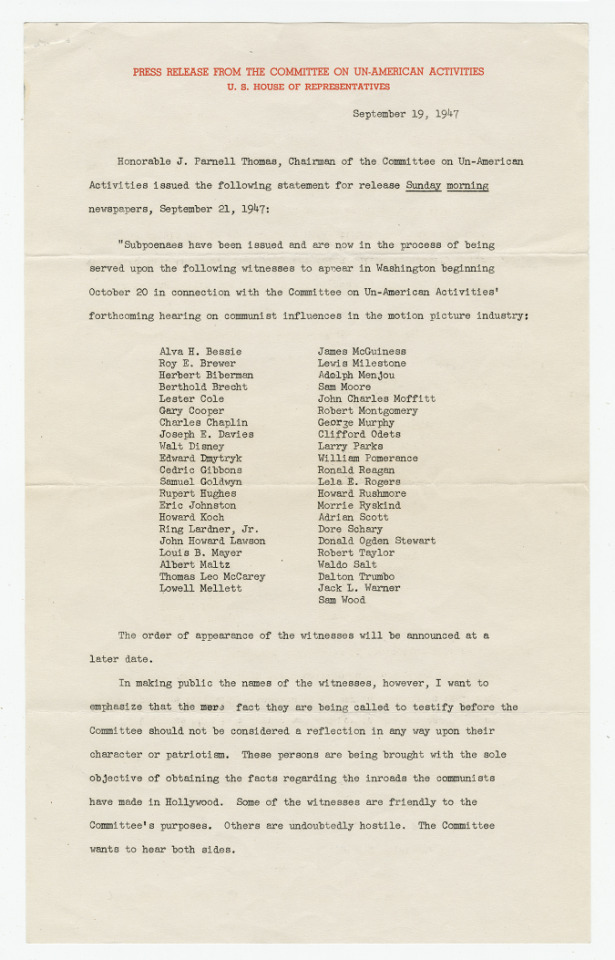

On 9/19/1947, the House Un-American Activities Committee subpoenaed witnesses on the “inroads the communists have made in Hollywood.”
Among the witnesses were Charlie Chaplin, Ronald Reagan, Walt Disney, and others.
File Unit: Exhibits, Evidence and Other Records of the Investigative Section of the Internal Security Committee During the 79th through 94th Congresses Related to the Hollywood Black List, 1945 - 1976
Series: Committee Papers, 1945 - 1975
Record Group 233: Records of the U.S. House of Representatives, 1789 - 2015
Transcription:
PRESS RELEASE FROM THE COMMITTEE ON UN-AMERICAN ACTIVITIES
U.S. HOUSE OF REPRESENTATIVES
September 19, 1947
Honorable J. Parnell Thomas, Chairman of the Committee on Un-American Activities issued the following statement for release Sunday morning ["Sunday morning" underlined] newspapers, September 21, 1947:
"Subpoenaes have been issued and are now in the process of being served upon the following witnesses to appear in Washington beginning October 20 in connection with the Committee on Un-American Activities' forthcoming hearing on communist influences in the motion picture industry:
Alva H. Bessie
Roy E. Brewer
Herbert Biberman
Berthold Brecht
Lester Cole
Gary Cooper
Charles Chaplin
Joseph E. Davies
Walt Disney
Edward Dmytryk
Cedric Gibbons
Samuel Goldwyn
Rupert Hughes
Eric Johnston
Howard Koch
Ring Lardner, Jr.
John Howard Lawson
Louis B. Mayer
Albert Maltz
Thomas Leo McCarey
Lowell Mellett
James McGuiness
Lewis Milestone
Adolph Menjou
Sam Moore
John Charles Moffitt
Robert Montgomery
George Murphy
Clifford Odets
Larry Parks
William Pomerance
Ronald Reagan
Lela E. Rogers
Howard Rushmore
Morrie Ryskind
Adrian Scott
Dore Schary
Donald Ogden Stewart
Robert Taylor
Waldo Salt
Dalton Trumbo
Jack L. Warner
Sam Wood
The order of appearance of the witnesses will be announced at a later date.
In making public the names of the witnesses, however, I want to emphasize that the mere fact they are being called to testify before the Committee should not be considered a reflection in any way upon their character or patriotism. These persons are being brought with the sole objective of obtaining the facts regarding the inroads the communists have made in Hollywood. Some of the witnesses are friendly to the Committee's purposes. Others are undoubtedly hostile. The Committee wants to hear both sides.
[page 2]
PRESS RELEASE FROM THE COMMITTEE ON UN-AMERICAN ACTIVITIES
U.S. HOUSE OF REPRESENTATIVES
- 2 -
The Committee had originally hoped to begin this hearing on September 29. However, a number of unforeseen circumstances have arisen regarding the membership of the Committee which necessitates a delay until October 20, in order that all members may be present for this important hearing. Mr. Mundt and Mr. Nixon are now in Europe as members of Congressional committees studying conditions there. Mr. Veil is convalescing from a recent operation, and Mr. Peterson has informed me that he cannot possibly attend the hearings this month. I feel quite certain, however, that all the members will be available by October 20.
Hearings will begin as scheduled September 24 on the Hanns Eisler phase of this hearing. This cannot be delayed until the October date for the reason that all of the witnesses have been subpoenaed and are in Washington at this time, some having been brought from foreign countries. The announced witnesses in the Hanns Eisler care are as follows:
Sumner Welles
P.C. Hutton, Second Secretary and Consul, Guatemala City, Guatemala
George S. Messermith, former Ambassador to Argentina
Joseph Savoretti, Asst. Commissioner for Adjudication U.S. Immigration and Naturalization Service.
Clarence R. Porter, Chief Inspector U.S. Immigration and Naturalization Service.
Hearings will begin in the Caucus Room of the Old House Office Building, at 10:30 A.M., September 24.
I should also like to announce at this time that I intend to make a nation-wide radio address early in October relative to the Hollywood hearing."
#archivesgov#September 19#1947#1940s#postwar#HUAC#House Un-American Activities Committee#communism#red scare#Hollywood
39 notes
·
View notes